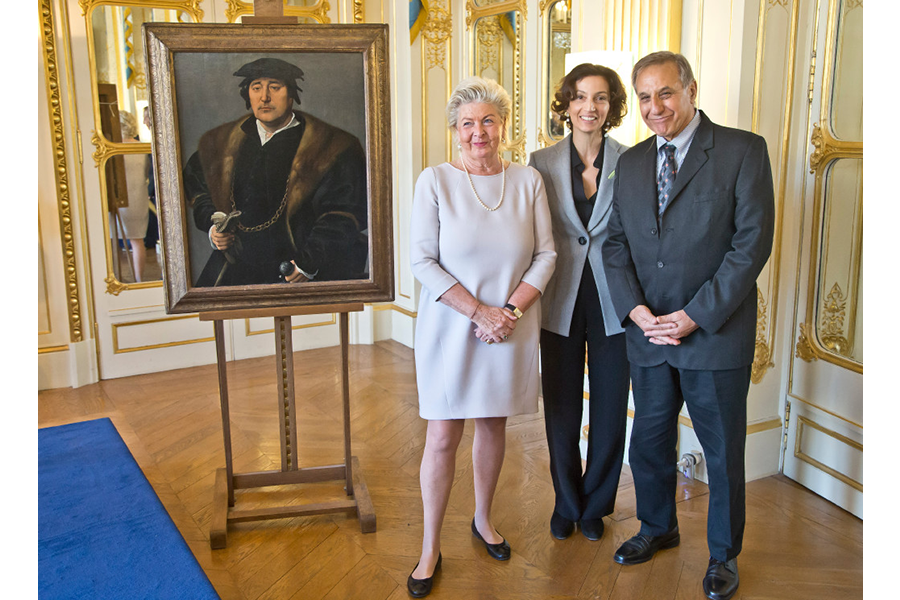'Portrait of a Man' painting: Destined for a Nazi museum, returned to heirs
Loading...
The granddaughter of a Jewish couple who escaped Nazi Germany by selling one of their prized paintings has been reunited with the work – despite never knowing it existed.
Henrietta Schubert, who lives in Vienna, was recently contacted by the French government, who told her that a 16th-century portrait in their museums belonged to her. While she hadn’t heard her grandparents speak of the 'Portrait of a Man' painting or its sale in 1938, genealogists were able to track her down and present the portrait to her at an unveiling in Paris almost 80 years later.
"You never expect something like this," Schubert told the Associated Press. "The Nazis are dead, and this can help our wounds heal."
In France, around 2,000 pieces of unclaimed art and artifacts with connections to the Holocaust and Nazi Germany adorn the walls or sit on the shelves of museums. France acquired them after the Allies defeated the Nazis in 1945.
While more than 100 pieces were stolen from Jews, others may have been commissioned or purchased by Nazis during the Holocaust. Experts have yet to determine the origins of many pieces, but all are labeled “MNR” – for National Museums Recovery in French. Those letters were often the sole indication of histories, leaving millions of viewers unaware of their complex and tragic origins.
For years, the government has relied on those with ties to the artwork to come forward, verifying their right to the pieces and returning them. Now, France has amped up its efforts to connect the mysterious pieces to their original owners or heirs, hoping the pieces of family history can heal some of the wounds left by the Holocaust.
"Many Holocaust survivors and Jews who fled the Germans didn't talk about their often painful wartime experiences, including that they had art works spoliated. So many families don't know," Marie-Christine Labourdette, France's director of museums, told The Associated Press.
Experts determined that the painting returned to Schubert’s family was one of many intended to hang in Adolf Hitler’s Fuhrermuseum, which he intended to open in his hometown of Linz, Austria, to house stolen works of art. Her grandparents exchanged the piece to secure passage to America.
While some of the pieces come from world renowned artists like Claude Monet, Auguste Renoir, Edouard Manet, Paul Gauguin, and Gustave Courbet, others are lesser known and of little value.
For many families, the cash value of the art isn’t what matters, but the emotional connection to their own family’s past.
"The painting doesn't even have to have any monetary value," Christopher Bromberg, Schubert’s cousin from Philadelphia who traveled to Paris to receive the painting with her, said. "It's about connecting us to our past and the story of our family that was lost."
This report contains material from the Associated Press.








